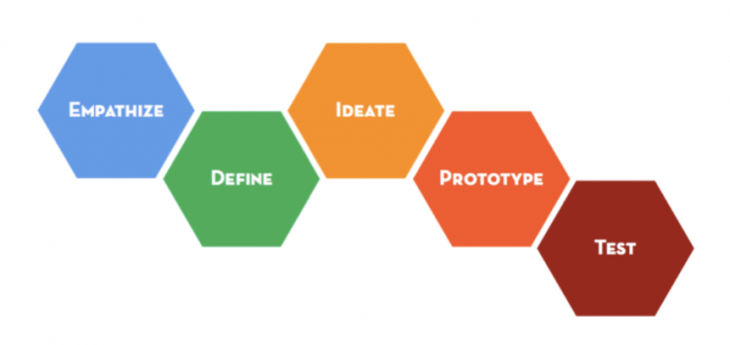An increasing number of companies are transforming product development by embracing a design method that puts the customer first. Instead of relying on people’s gut instincts, this new design framework cultivates empathy for users, emphasizes iteration and prototyping, and promotes tests throughout the process.
It’s called design thinking, and more tech companies are adopting it. Microsoft, for instance, is using this framework to design better products with the disabled in mind—an approach that enables the company to “create products that are better for everyone.”
Another example is IBM. The enterprise software company uses design thinking to get ahead of the relentless innovation in digital technology, transforming its culture in the process. In fact, Virginia M. Rometty, IBM’s chief executive, touted the importance of this approach in shaping the company’s future, saying, “Design thinking is at the center.”
For Rometty, design thinking is an important part of IBM’s ambitious effort “to rethink and reimagine” the customer experience.
The rise of design-focused companies
If you’re wondering why companies like Microsoft and IBM are prioritizing design, the answer is simple: because it makes business sense. One study found that design-focused companies have outperformed the S&P 500 index by 228% in the last decade. Design is shaping the future of Facebook and other tech giants.
Product design is particularly important in the technology industry. Users have come to expect intuitive and seamless design, but as technology has progressed, creating better products has also become more complex.
Everyone in product management and development needs to consider more platforms. "You have to think about the phone, you have to think about the desktop, you have to think about identity, you have to think about network effects,” says Kate Aronowitz, vice president of design at investment services software company Wealthfront, on the challenges facing product designers today. “Design has gotten really, really complicated. So it's no wonder that so many companies are now putting such a focus on it."
This shift in focus gives way to the rise of design thinking.
But how can design thinking drive business results? For companies that have already adopted this framework, there are three concrete ways design thinking is improving product innovation and customer experience.
3 Business benefits of the design thinking process:
1. Nurtures customer-centric product innovation
Design thinking forces UX pros, developers, and others involved in innovation to focus on the people they’re designing for in the first place: the end users and customers.
“At IBM, we define design as the intent behind an outcome,” writes Lara Hanlon, software product designer at IBM. “We use design thinking to form intent by developing understanding and empathy for our users.”
Design thinking is helping IBM accelerate the pace of innovation while boosting value for users. Adds Hanlon, “When you use design thinking, your users are your North Star. They are the premise for every action you take. You will measure your success based on the value you bring to them, actively involve them in your work to help you understand the problem, and get feedback on ideas along the way.”
According to Jennifer Kilian, digital vice president of McKinsey Digital Labs, adopting the design thinking principle of putting the customer first is important because “if you solve for their needs first, you’ll always win.”
2. Removes pain points in the customer journey
As a human-centered framework, the design thinking process starts with empathy.
 Design thinking process (Credit: dschool.stanford.edu)
Design thinking process (Credit: dschool.stanford.edu)
“Elicit stories from the people you talk to, and always ask ‘Why?’ to uncover deeper meaning,” says a Stanford guide on design thinking. Observing, listening, and engaging with customers is key step to the process.
With empathy, product developers can walk in their customer’s shoes and discover obstacles in the customer journey. According to Ryan Hart, principal analyst at Forrester, companies like General Electric and IBM have been able to eliminate customer pain points by adopting design thinking.
“When you look at GE’s old DNA, it was very much about ‘How do we make money?’ and it was built on a highly siloed, very traditional manufacturing model,” Hart said at a Forrester Customer Experience Marketing event. “In 2010, GE did an internal audit and found out that it was releasing hundreds of products across multiple business lines every year, but had zero consistent user-experience strategy and was losing touch with its customers.”
By identifying and fixing pain points, GE improved the customer experience and saved costs. “For them to pivot and add design thinking into the DNA equation was a big step, but the effects were felt immediately,” explains Hart. “In fact, in the first year, the company realized $15 million could be saved in development costs alone.”
3. Informs what not to do
When it comes to better products and more seamless customer experiences, simpler is often better.
“Many products built on an emotional value proposition are simpler than competitors’ offerings,” writes Jon Kolko, vice president of design at the education tech company Blackboard, in an article for the Harvard Business Review. “This restraint grows out of deliberate decisions about what the product should do and, just as important, what it should not do. By removing features, a company offers customers a clear, simple experience.”
Design thinking can help business leaders practice necessary restraint. That’s because a critical step in design thinking is clearly defining “the challenge you are taking on, based on what you have learned about your user and about the context,” according to the Stanford University Institute of Design. This focuses the process, helping identify which features and experiences should be dropped.
The latter steps in the design thinking process—ideation, prototyping, and testing—help further validate the features, processes, and experiences that customers are looking for.
The business philosophy behind the design thinking process
In the end, design thinking drives results because it recognizes an important tenet of business success: that your customers should be at the center of everything you do. In some ways, design thinking isn’t simply a framework—it’s a culture that nurtures agile decision-making and customer-centric ways of doing business.
Thanks to social and mobile technologies, customer behavior, attitudes, and motivations continue to change. As customers evolve, design thinking will only grow in importance in the decades ahead. Consequently, the need to build empathy for your customers will become even more crucial. Everyone working in product—from the chief technology officer to the UX designers—need to access and use customer intelligence at every step of the process. Engaging directly with the people you’re designing for is a necessary step in developing deep empathy and building better products and services for your customers.
A CULTURE OF CUSTOMER EXPERIENCE
INSULAR LIFE'S 360 CUSTOMER VIEW






